


WOLFGANG AMADEUS MOZART 1756 -
xxxxxA child protégé, the Austrian musical genius Wolfgang Amadeus Mozart was composing and performing at the age of six and, soon afterwards, touring the courts of Europe with his father and sister, also a talented musician. He later went on other tours, including Italy, but spent much time in his home town of Salzburg and in Vienna. His output was phenomenal. During a working life of just 30 years he composed over 600 pieces of church and secular music, including piano concertos, violin sonatas, symphonies, string quartets, and four of the world’s most famous operas, such as The Marriage of Figaro in 1786 and The Magic Flute, the year of his death. He excelled in every form in which he composed, and produced some of the world’s most beautiful and imaginative music. Some of his work shows great emotional depth, notably his operas and concertos. Among his work are the string quartets dedicated to his friend Haydn, his “Jupiter” symphony, and his serenade Eine kleine Nachtmusik. He died at the age of 35.
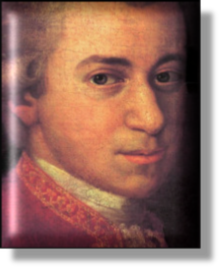 xxxxxThe Austrian composer and virtuoso performer Wolfgang Amadeus Mozart was one of the most talented and prolific musicians of all time. A child protégé, he was trained by his father Leopold Mozart -
xxxxxThe Austrian composer and virtuoso performer Wolfgang Amadeus Mozart was one of the most talented and prolific musicians of all time. A child protégé, he was trained by his father Leopold Mozart -
xxxxxBorn in Salzburg, he was playing the harpsichord at the age of three. When he was just six his father -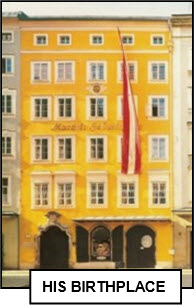 three years the two youngsters played their way across Europe, delighting and astounding their aristocratic audiences by their precocious and exceptional talent. They were warmly received at the court of the Empress Maria Theresa, played at Versailles, and met the composer Johann Christian Bach whilst in London. Mozart published his first works while in Paris -
three years the two youngsters played their way across Europe, delighting and astounding their aristocratic audiences by their precocious and exceptional talent. They were warmly received at the court of the Empress Maria Theresa, played at Versailles, and met the composer Johann Christian Bach whilst in London. Mozart published his first works while in Paris -
xxxxxOn returning home in 1772, he was made concertmaster to the new archbishop of Salzburg, a man who cared little for music and did not appreciate the talent at his disposal. At this time Mozart composed a large amount of sacred and secular works for little remuneration or recognition. In 1777, therefore, he travelled to France with his mother in the hope of finding a more congenial and better paid appointment, but the two-
xxxxxAt Salzburg he was made court organist, and threw himself into composing a wealth of music which included his famous Coronation Mass, and a large number of symphonies, sonatas, concertos, and chamber music. These showed the emergence of a distinct style and a greater maturity in musical composition, and were followed in 1781 by his successful opera Idomeneo, King of Crete. Doubtless on the strength of this success, the archbishop invited him to his palace at Vienna, but the old antagonisms between them quickly came to the surface, and Mozart soon found himself out of a job. He requested his discharge and it was granted!
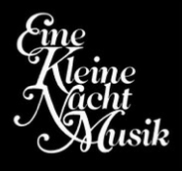
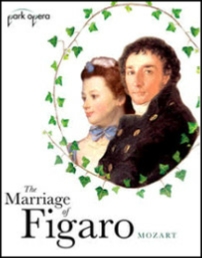 xxxxxThe following year, despite his father’s opposition, he married Constanze Weber (Aloysia’s younger sister) and they settled in Vienna. It was here, as a freelance composer, teacher and concert pianist that he produced some of his finest operas: He composed a German operetta for Emperor Joseph II in 1782 entitled The Abduction from the Seraglio, and followed this up with his four major works, The Marriage of Figaro, Don Giovanni, All Women Do So (Cosi fan tutte), and the Magic Flute, all within the space of four years. In addition, his concerts proved a great success, and to this period belongs his great piano concertos, the six string quartets that he dedicated to his “dear friend” Joseph Haydn, his Serenade Eine kleine Nachtmusik, and his last three symphonies, all composed within seven weeks and ending with his “Jupiter” (No.41 in C).
xxxxxThe following year, despite his father’s opposition, he married Constanze Weber (Aloysia’s younger sister) and they settled in Vienna. It was here, as a freelance composer, teacher and concert pianist that he produced some of his finest operas: He composed a German operetta for Emperor Joseph II in 1782 entitled The Abduction from the Seraglio, and followed this up with his four major works, The Marriage of Figaro, Don Giovanni, All Women Do So (Cosi fan tutte), and the Magic Flute, all within the space of four years. In addition, his concerts proved a great success, and to this period belongs his great piano concertos, the six string quartets that he dedicated to his “dear friend” Joseph Haydn, his Serenade Eine kleine Nachtmusik, and his last three symphonies, all composed within seven weeks and ending with his “Jupiter” (No.41 in C).
xxxxxThese works and concert performances brought him a measure of renewed fame, but very little financial reward. Indeed, because he received no commission for his operatic work, he struggled to make ends meet, especially as he tended to have extravagant tastes. Furthermore, matters became worse as his musical style began to fall out of favour, and some of his productions were seen as bordering on the revolutionary. Beaumarchais’ comedy The Marriage of Figaro, for example, upon which his opera was based, had been banned in France for some years because it was considered by the king as an attack on the ruling classes.
xxxxxIn July 1791 some person unknown commissioned him to write a requiem mass, paying him in advance. For some reason or other, probably because of ill-
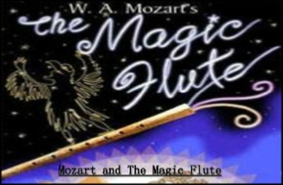 xxxxxTogether with his close friend Joseph Haydn, Mozart enriched both in purity and depth the musical forms of the classical period, be it the sonata, the symphony, the concerto, the opera or the string quartet. He excelled in every form in which he composed, and he
xxxxxTogether with his close friend Joseph Haydn, Mozart enriched both in purity and depth the musical forms of the classical period, be it the sonata, the symphony, the concerto, the opera or the string quartet. He excelled in every form in which he composed, and he 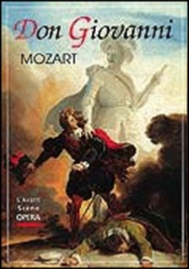 produced some of the world’s most beautiful and imaginative music. Yet whilst his music is tuneful and technically perfect, much of it is infused with a depth of emotion which goes far beyond the superficial. And nowhere is this more marked than in his operas where, refining the changes introduced by the German composer Cristoph Gluck, his music, both vocal and instrumental, greatly enhanced the moods of the plot, and the subtle development of the principal characters. And in his hands, too, the overture becomes an intrinsic part of the musical composition, seen at its best, perhaps, in his Don Giovanni of 1787. It is little wonder that, today, Mozart is regarded by many as the greatest composer of all time.
produced some of the world’s most beautiful and imaginative music. Yet whilst his music is tuneful and technically perfect, much of it is infused with a depth of emotion which goes far beyond the superficial. And nowhere is this more marked than in his operas where, refining the changes introduced by the German composer Cristoph Gluck, his music, both vocal and instrumental, greatly enhanced the moods of the plot, and the subtle development of the principal characters. And in his hands, too, the overture becomes an intrinsic part of the musical composition, seen at its best, perhaps, in his Don Giovanni of 1787. It is little wonder that, today, Mozart is regarded by many as the greatest composer of all time.
xxxxxIncidentally, he never finished the Requiem Mass, and the “mystery” surrounding this commission, his last piece of work, doubtless contributed to the rumours that he had been poisoned. There is no evidence to that effect. It is likely that he died as a result of kidney failure from natural causes. Another source suggests he died from mercury poisoning while being treated for syphilis. Thexrequiem was completed in 1803 by Franz Xaver Süssmayr (1766-
xxxxx…… It was while composing Don Giovanni that Mozart received a 16-
xxxxx…… Mozart’sxworks were catalogued chronologically by the Austrian scholar Ludwig von Köchel (1800-
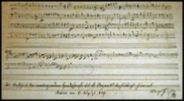
xxxxx…… In September 2008 a piece of music by Mozart turned up in the city library of Nantes in western France. A single sheet and described as a “melody sketch”, it was apparently bequeathed to the library in the early part of the 19th century, and subsequently forgotten! Evidence, including the type of paper, suggests that it was written some time during the last four years of the composer’s life.……
xxxxx…… And in May 2011 a collection of six short sonatas for piano and violin was discovered at the back of a charity shop in Reading, England. It was found to be a 31 page booklet of sheet music written by Mozart and dedicated to Queen Charlotte (wife of King George III) when he visited London as a child prodigy in 1765.
Acknowledgements
Mozart: detail, by the Austrian painter Johann Nepmuk della Croce (1736-
Including:
Muzio Clementi

xxxxxIn December 1781 Mozart took part in a famous keyboard competition with the Italian pianist and composer Muzio Clementi (1752-
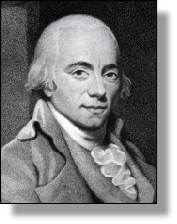 xxxxxIt was in December 1781 that Mozart took part in his famous keyboard competition with the Italian pianist and composer Muzio Clementi (1752-
xxxxxIt was in December 1781 that Mozart took part in his famous keyboard competition with the Italian pianist and composer Muzio Clementi (1752-
xxxxxClementi was born in Italy, and by the age of 13 had already composed an oratorio and a mass. In 1766 he came to the attention of a wealthy Englishman, Sir Peter Beckford, who was prepared to pay for his musical training up to the age of 21. As a result he moved to England and for some years studied and performed at his benefactor’s estate in Dorset. He made his first public appearance in London as a soloist harpsichordist in 1775, and this marked the beginning of a highly successful career as a teacher, composer and piano virtuoso. He made a number of concert tours across Europe and it was during his first one, begun in 1780, that his skill as a pianist was pitted against that of the great Austrian composer and virtuoso.
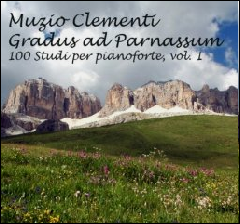 xxxxxIn 1790, after giving up his performing career, he opened a music publishing business in Cheapside, London and set up a factory to manufacture pianos. From then on he concentrated on composing -
xxxxxIn 1790, after giving up his performing career, he opened a music publishing business in Cheapside, London and set up a factory to manufacture pianos. From then on he concentrated on composing -
xxxxxHe made his last public appearance at the opening Concert of the Philharmonic Society in 1828, and spent his final years in Evesham, Worcestershire. He died there after a brief illness, and was buried in Westminster Abbey. Clementi has justly been termed “the father of modern piano playing”. Modern techniques are still based on those that he developed. And as a composer, his sixty or so sonatas defined the form of this musical composition.
xxxxxIncidentally, the great German composer Ludwig van Beethoven greatly admired Clementi’s compositions. He found them full of fresh and original melodies, particularly his sonatas. As a measure of his esteem, in 1807 he gave Clementi full publication rights on all his music in England. ……
xxxxx…… One of Clementi’s pupils was John Field, a young Irishman whose works and playing were to influence a number of major composers, including Chopin, Brahms, Schumann and Liszt.
G3b-


